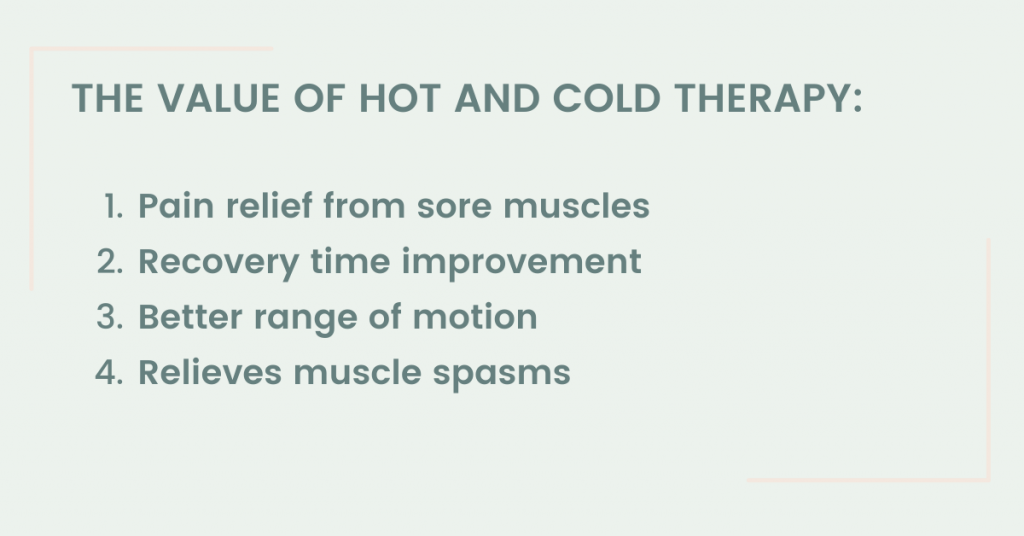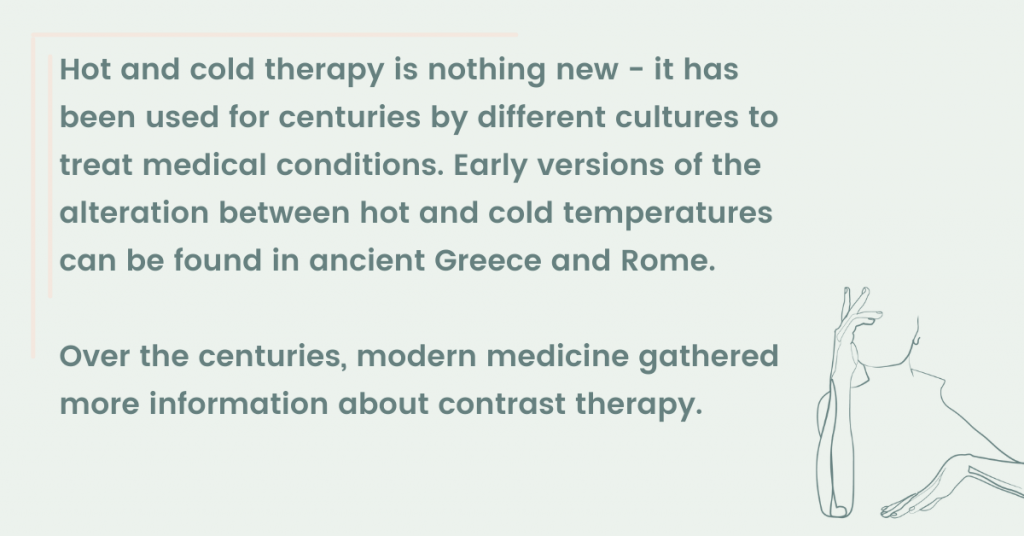Hot and cold therapy, or “contrast therapy“, is more than just a buzzword in the health and wellness community. In fact, the most recent data suggests that almost two-thirds of physical therapists recommended using cold therapy for muscle treatment, while a further 60% recommend using a combination of both hot and cold therapy.
So, what does the research tell us, and should you be incorporating hot and cold therapy into your recovery and muscle treatment? In this article, we’ll take a look at the origins of hot and cold therapy, delve into what the research tells us about the benefits and potential drawbacks, and discuss the ideal frequency to help you make an informed decision.
The value of hot and cold therapy
Hot and cold therapy is an easy way to improve your wellbeing and a great addition to add to into any wellness or workout routine. Here’s what you can expect:
Pain relief from sore muscles: Hot and cold therapy is an efficient way to deal with sore muscles. While the sauna’s heat helps to increase blood flow and relax affected muscles, the cold water can reduce inflammation and numb signals that pain receptors send to your brain. As contrast therapy alters between these two states, it is an excellent addition for sore muscles in general, as well as muscle pain caused by conditions like arthritis.
Recovery time improvement: Hot and cold therapy is a great way to manage and recover sore muscles after a long workout. After the stress of a workout, your muscles require the right nourishment to heal and strengthen – this can be provided by the hot part of contrast therapy (sauna). The following ice bath then helps to reduce inflammation. As a result, hot and cold therapy works to shorten the recovery time required for muscles. That’s why you often see athletes rely heavily on ice baths and contrast therapy – including soccer, rugby players, body builders, and marathoners.
Better range of motion: The alteration between hot and cold contrast therapy helps to prevent stiff muscles and joints. The increased blood circulation and muscle relaxation of the heat and the numbing and inflammation-reducing aspects of the cold help to increase the range of motion of affected muscles and joints, leaving you with more flexibility and smoother joint movement.
Muscle spasms: If you suffer from muscle spasms or restless legs, contrast therapy can be a game-changer. As the method focuses on loosening and relaxing muscles, contrast therapy at regular intervals can reduce muscle spasms significantly.

The origins of hot and cold muscle therapy
Hot and cold therapy is nothing new – it has been used for centuries by different cultures to help with a wide variety of medical conditions. Early versions of the alteration between hot and cold temperatures can be found in ancient Greece and within early Roman practices. Both ancient civilisations used hot and cold water to treat sore muscles and inflammation.
Over time, modern medicine has gained more information about the beneficial aspects of contrast therapy, for example, its valuable contributions to circulation. Therefore, combining contrast therapy with other treatments, like massages and physiotherapy, has become more common over time.
The popularity of hot and cold therapy has continued to grow. Today, Rimba Sweat are pleased to offer their own version of contrast therapy with participants traditional Finnish saunas and ice baths!

How often should I do hot and cold therapy?
When considering the frequency with which hot and cold therapy should be added to your routine, it all comes down to your training plan and your recovery goals.
If you are very active or are an athlete, recovery plays a huge role in overall performance. In that case, you can use contrast therapy for muscles every other day. To alleviate symptoms that are not sports-related (like arthritis symptoms), it may be better to slowly integrate hot and cold therapy into your routine a couple of times a week.
If you’re new to contrast therapy, it can take time to get used to it and integrate it into your routine. We recommend starting with shorter sessions, and gently becoming more comfortable with longer sessions over time.
Contrast Therapy with Rimba Sweat at our Neutral Bay Studio
Surrender to both the intense warmth and profound cold in Rimba’s newest contrast therapy offering: The Remedy Room. Our large communal contrast therapy room is complete with a custom made Finnish traditional sauna, two ice baths and pail shower. For more information, get in touch with our friendly team at Rimba Sweat today.


